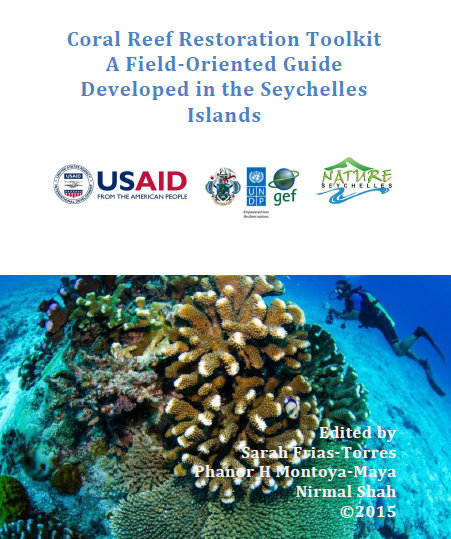Coral reef restoration toolkit
Learning how to cement the transplanted corals
How to monitor coral transplantation site
The purpose of this Toolkit is to share the knowledge gained by the Reef Rescuers team. It aims to fill a void in the practical know-how of coral reef restoration By sharing what was learned and tested in the field, it is hoped that the success of others implementing similar projects elsewhere will be improved. It aims to be a companion for scientists, managers, practitioners and local communities who are facing a coral reef restoration challenge and need guidance using low-cost field tested methods, as well as how to fix problems encountered in field conditions. The team explains what they did in the coral reef restoration project and how they solved the problems encountered using low cost solutions and the limited resources found in a developing nation.
• Feasibility and desirability of coral reef restoration in the specific site
• Adequate project funding or private sector investment
• Buy-in and collaboration of government, communities and NGOs
• Coral reef practitioners/biologists working in the project
• One size doesn’t fit all. The experimental methods which were used in the project didn’t all work and there was a lot of trial and error. The toolkit explains these. This is why the guide was not called “Best Practice”.
• The toolkit doesn’t make you an instant expert. The toolkit cannot be used by amateurs and communities without the design and supervision by experienced coral reef scientists. Otherwise it becomes tinkering and more harm than good can be done.
• It’s complicated. Potential users of the Toolkit need to keep in mind that reef restoration is complex , time consuming, costly, and not always recommended. In fact, as regards the latter the Toolkit presents a flowchart to decide whether or not reef restoration is necessary or even feasible in a given situation

